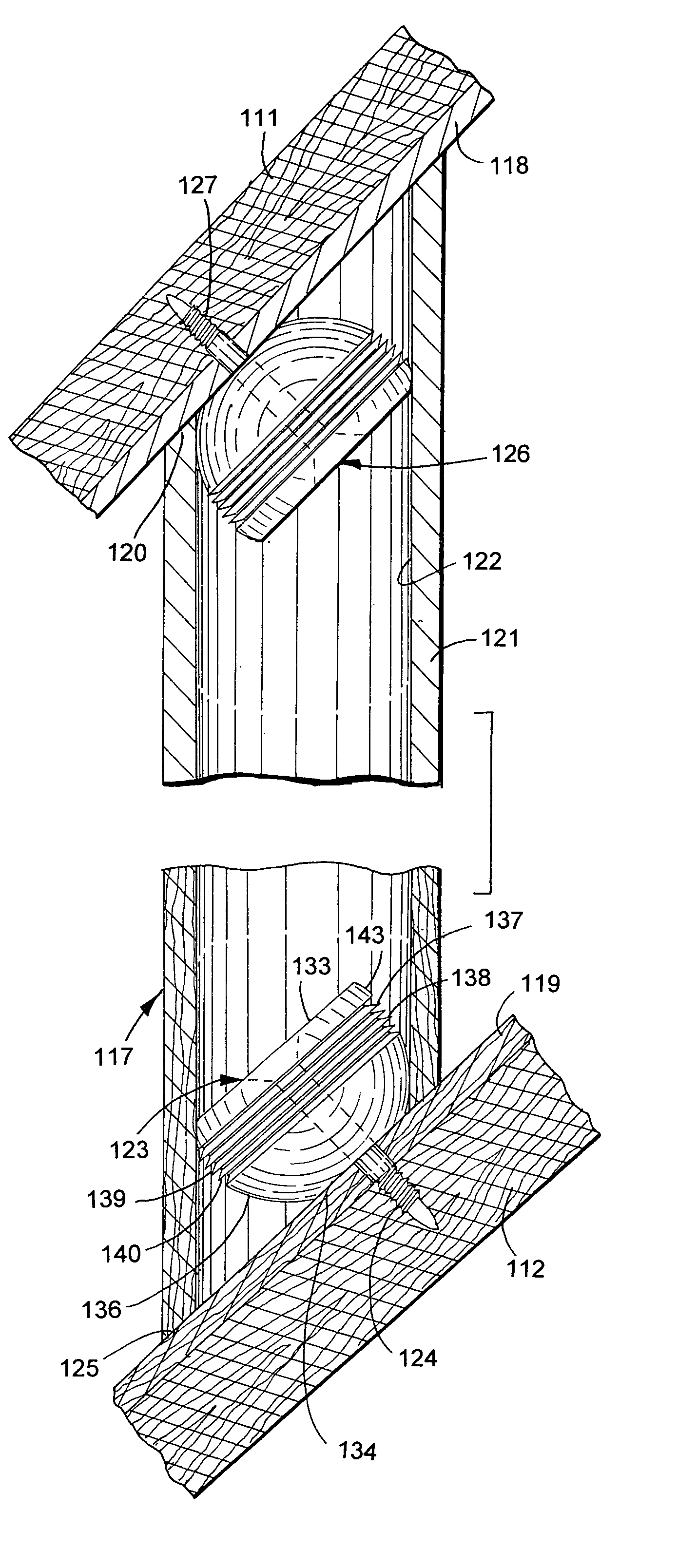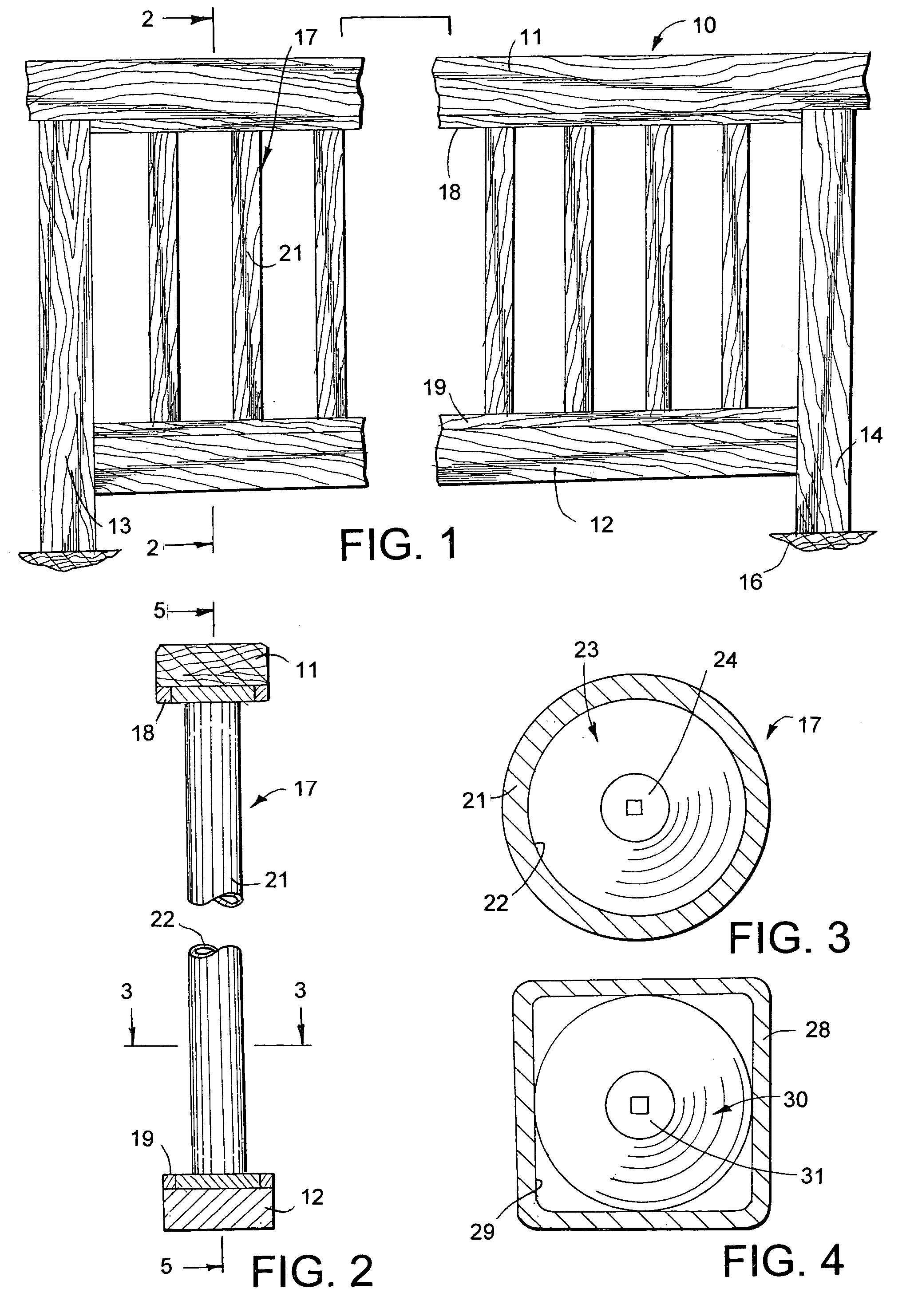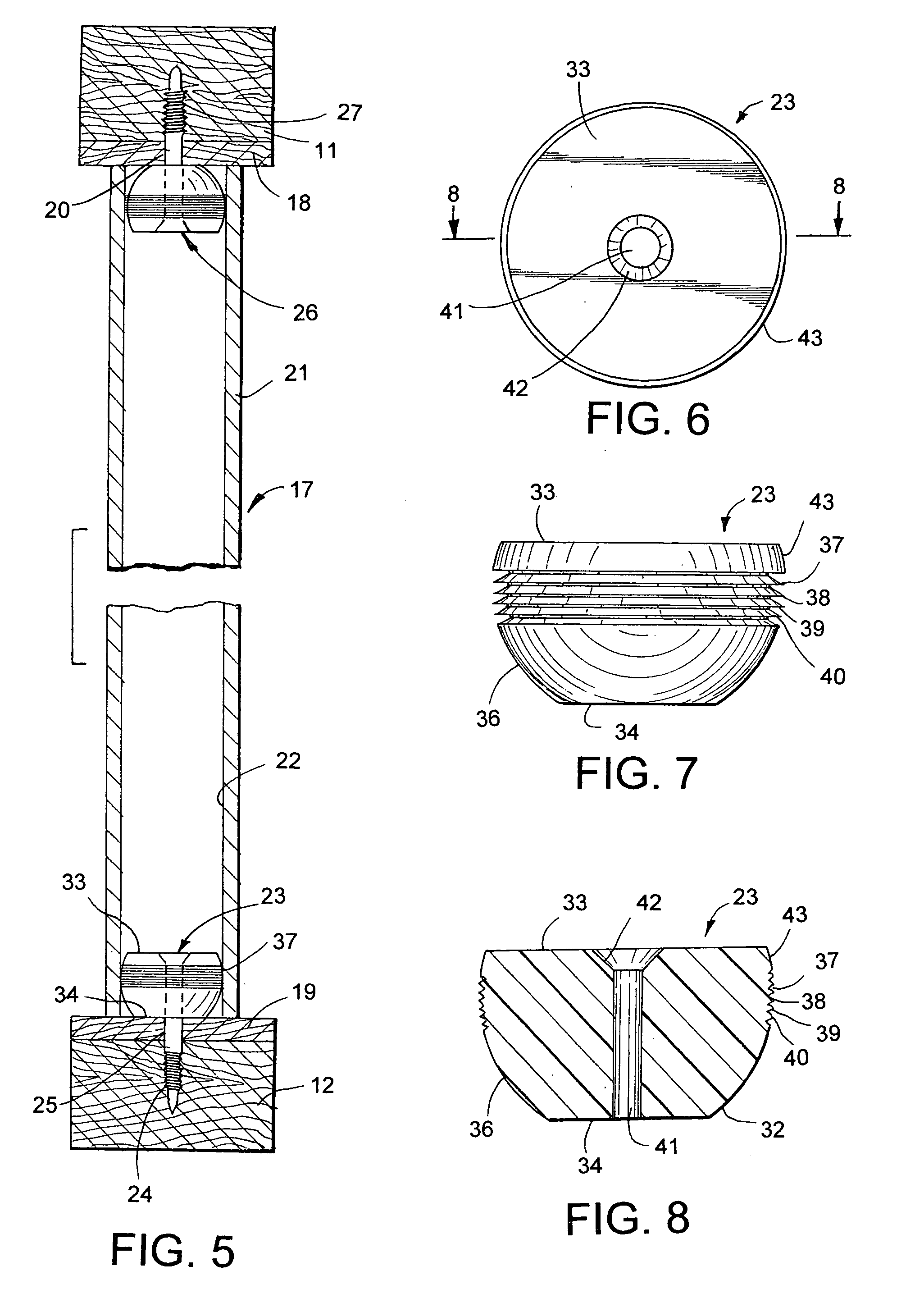Railing
a technology for railings and railings, which is applied in the direction of wire networks, other domestic articles, wire articles, etc., can solve the problems of reducing affecting the service life of the rail, so as to achieve the effect of tight friction or force fit and minimum time and labor
- Summary
- Abstract
- Description
- Claims
- Application Information
AI Technical Summary
Benefits of technology
Problems solved by technology
Method used
Image
Examples
Embodiment Construction
[0040]A railing 10, shown in FIG. 1, has horizontal top and bottom rails 11 and 12 joined to upright columns or posts 13 and 14 providing a generally rectangular opening for a plurality of laterally spaced spindles or balusters 17. Posts 13 and 14 are anchored to a support 16, such as a floor, deck, or ground. Rails 11 and 12 and posts 13 and 14 are conventional wood members. Plastic, metal and composite materials can be used for the rails and posts. The spindles 17 comprise laterally spaced upright cylindrical tubes or linear tubular members 21. Tubular members 21 are metal tubes, such as aluminum tubes. Other materials, such as plastic or composite materials, can be used for spindles 17. A plurality of laterally spaced upright linear tubes 21 are located between rails 11 and 12. The opposite ends of the tubes 21 are retained with ball connectors or ball knobs 23 in surface engagement with flat plates 18 and 19 located in surface engagement with top and bottom rails 11 and 12 to sp...
PUM
 Login to View More
Login to View More Abstract
Description
Claims
Application Information
 Login to View More
Login to View More - R&D
- Intellectual Property
- Life Sciences
- Materials
- Tech Scout
- Unparalleled Data Quality
- Higher Quality Content
- 60% Fewer Hallucinations
Browse by: Latest US Patents, China's latest patents, Technical Efficacy Thesaurus, Application Domain, Technology Topic, Popular Technical Reports.
© 2025 PatSnap. All rights reserved.Legal|Privacy policy|Modern Slavery Act Transparency Statement|Sitemap|About US| Contact US: help@patsnap.com



